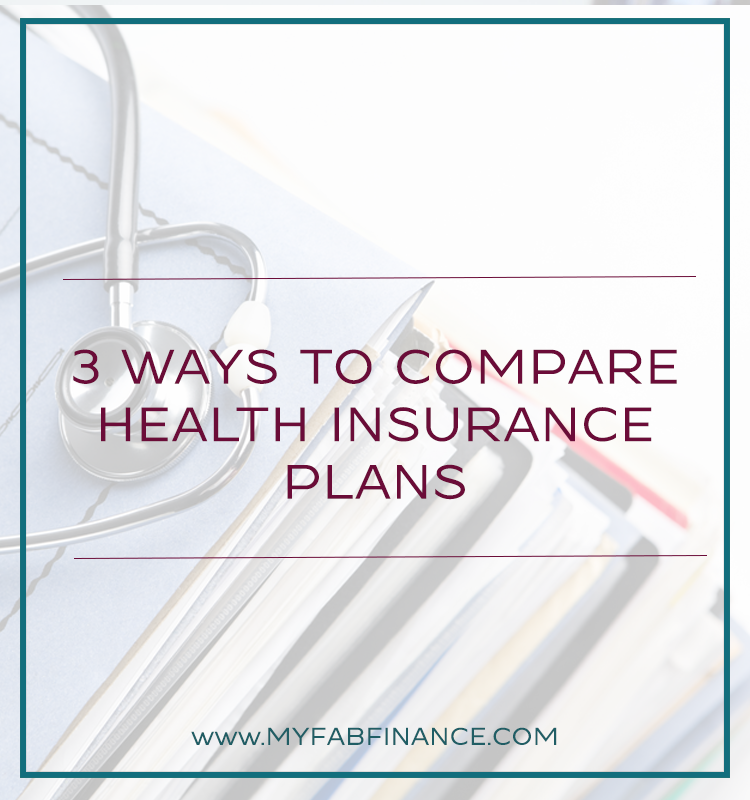Let’s be real, some major medical expenses are unavoidable. However, many expenses can be greatly reduced by the type of insurance plan you have.
Although open enrollment for 2017 ends on January 31st, you can qualify for a Special Enrollment Period if you’ve had certain life events, including losing health coverage, moving, getting married, having a baby, or adopting a child.
If you qualify for the Special Enrollment Period, you usually have up to 60 days following the event to enroll in a plan. If you miss that window, you have to wait until the next Open Enrollment Period to apply.
Lets discuss three important ways to compare health insurance plans so that you can maximize your benefits and reduce out of pocket expenses.
1.Pay attention to the overall cost of the insurance plan
Your medical expense is more than just the monthly premium. It’s important to pay attention to all of your potential expenses. This includes your annual deductible, office visit fees, emergency room co-pays, urgent care visits, etc. Looking at these things gives you an overall picture of how much the insurance plan could potentially cost you for the year. Each person’s health and life situation is different. Each type of fee affects people in different ways. For example, if you have children, office visits and urgent care fees are something you should pay close attention to since you are more likely to experience these types of medical expenses. Alternatively, if you’re single and in good health, pay attention to the annual deductible since most high deductible plans are less expensive per month.
Check out our article on Health Savings Accounts (HSA) to learn more about deductibles.
2.Look closely at what the plan covers
In 2014, the Affordable Care Act (ACA) made it a requirement for all new insurance plans to include Ten Essential Health Benefits. This includes:
- Emergency services
- Hospitalization
- Laboratory tests
- Maternity and newborn care
- Mental health and substance-abuse treatment
- Outpatient care (doctors and other services you receive outside of a hospital)
- Pediatric services, including dental and vision care.
- Prescription drugs
- Preventive services (such as immunizations and mammograms) and management of chronic diseases such as diabetes
- Rehabilitation services
However, some older insurance plans that are often sold to individuals and small businesses with fewer than 100 employees, can be renewed without the Ten Essentials if the plan was started before the reform. Look at each plan’s summary of benefits and coverage to ensure it covers what you need. Be realistic by thinking about your medical history, but also prepared for the unexpected.
3.Decide how much flexibility you need and how much you can afford
Most insurance companies offer a couple of types of plans; PPO and HMO. PPO stands for Preferred Provider Organization. This type of plan offers more flexibility when it comes to what doctors you can see and what hospitals you can visit. When comparing PPO health plans, look at the costs for visiting in-network and out-of-network providers. In-network will always be cheaper than out-of-network, but it’s important to pay attention to both.
HMO stands for Health Maintenance Organization. This type of plan has less flexibility when it comes to choosing a provider. HMO’s don’t allow you to see anyone outside of the network and you are required to get a referral if you need to see a specialist such as a dermatologist or an allergist.
PPO’s are more expensive than HMO’s, but as I said, they offer more flexibility when it comes to where you can go. So, if you’ve been seeing the same doctor for years and he/she no longer accepts your HMO, you have to decide if you are willing to pay more for a PPO plan in order to keep the same doctor.
Medical expenses are one of the leading causes of financial hardships across the United States. In fact, according to a study done by Nerd Wallet in 2013, “Bankruptcies resulting from unpaid medical bills will affect nearly 2 million people this year (2013)—making health care the No. 1 cause of such filings, and outpacing bankruptcies due to credit-card bills or unpaid mortgages…” (cnbc.com)
Understanding your health insurance plan and benefits can give you better control over your out of pocket costs and the impact they have on your overall finances. Check out the post about Health Savings Accounts which goes into more detail about how much insurance you need.

You said: